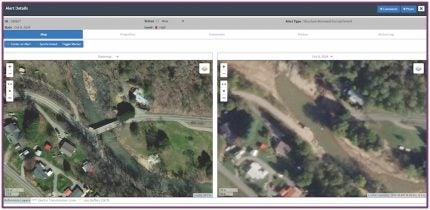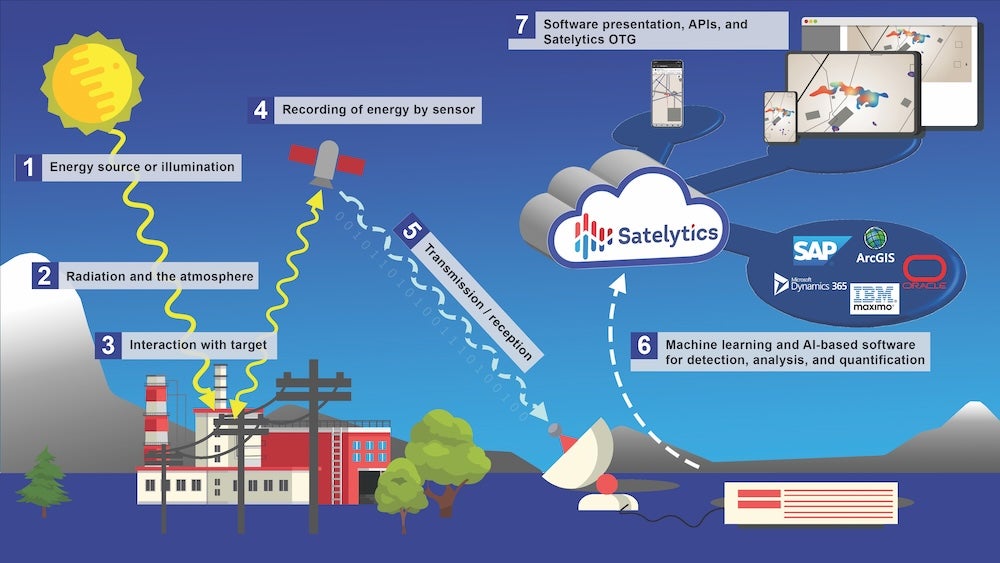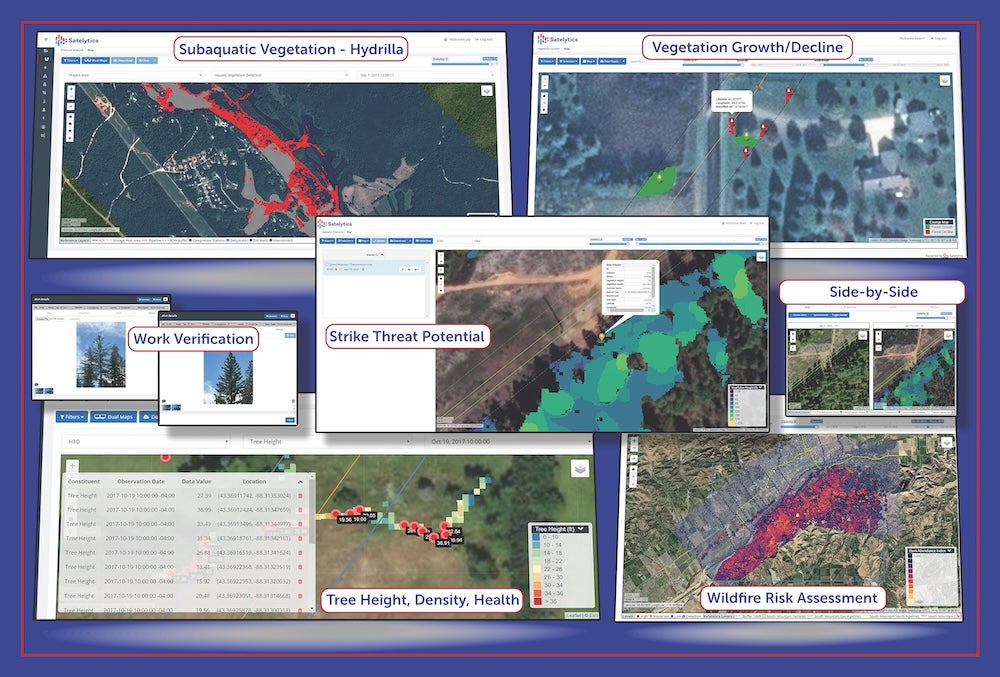
When hurricanes Helene and Milton swept across the southeastern US, the destruction was immense. Power lines were downed, water systems disrupted, and entire neighbourhoods were left in disarray during the disaster. For utility providers like Duke Energy, tasked with restoring vital services to millions, the challenge was monumental. Enter Satelytics, a small but powerful player in the world of artificial intelligence and satellite data, whose innovative technology is reshaping the way industries respond to crises.
Under the leadership of its dynamic CEO, Sean Donegan, Satelytics has become a game-changer for utilities, offering rapid, actionable insights during a disaster and beyond. In an exclusive interview, Donegan shared how his team provided support during the hurricanes and how their technology is creating new possibilities for sustainability and problem-solving across industries.
A vision rooted in prevention
Ten years ago, Sean Donegan founded Satelytics with a bold vision: to move businesses from reactive to proactive problem-solving. “Our goal from the start was to answer a simple question,” Donegan explained. “How early can we detect an issue and give businesses enough time to act before it spirals out of control?”
At the heart of Satelytics’ software is the use of light data. Everything on Earth – whether it’s a healthy tree, an algae bloom, or a damaged pipeline – reflects light in unique patterns. By analyzing these patterns, Satelytics can identify subtle changes that signal potential problems.
“For example, when light hits an oak tree, it creates a specific pattern,” Donegan said. “If that tree is unhealthy and likely to fall, the pattern changes. Our AI algorithms can pick up on that and flag it before the tree becomes a safety hazard.”
The software is powered by convolutional neural networks, a sophisticated type of artificial intelligence capable of processing vast amounts of data at remarkable speed. This technology forms the backbone of Satelytics, allowing it to analyze satellite images and deliver detailed insights within hours.

Satelytics in action: Hurricanes Helene and Milton
When Duke Energy called Satelytics during the hurricanes, they weren’t just seeking a service – they were reaching out to a trusted partner to help during the disaster. “Duke has been a long-time client of ours,” Donegan said. “They’re one of the largest utilities in the US, and their territory includes several hurricane-prone states like Florida, North Carolina, and South Carolina.”
As the hurricanes barrelled across Duke’s service area, the utility faced an overwhelming task: identifying damage across thousands of square miles and deciding where to deploy limited resources. Traditional methods like aerial surveys or on-the-ground inspections would have taken days and posed significant safety risks.
That’s where Satelytics came in. Using real-time satellite data, the company’s software provided a comprehensive before-and-after analysis of the affected areas. “Within hours, we could tell them which power lines were down, where flooding was most severe, and what infrastructure needed immediate attention,” Donegan said.
The insights were fast. Utility crews rely on accurate information to ensure they can work safely in hazardous conditions. By pinpointing areas of concern, Satelytics helped Duke prioritize repairs and restore power more quickly to the communities that needed it most.
“We didn’t wait for purchase orders or formalities,” Donegan emphasized. “When a disaster strikes, you act. That’s what we did, and Duke was incredibly appreciative.”
The science behind the speed
Satelytics’ ability to deliver such rapid insights lies in its unique approach to data analysis. The company works with satellite providers like Airbus and Planet Labs to collect high-resolution imagery, which is then processed using proprietary algorithms.
“Think of it like baking a cake,” Donegan said. “The satellite data is the raw ingredients – the eggs, flour, and sugar. Our software mixes and bakes those ingredients, turning them into a fully finished product: actionable insights.”
Satelytics also uses advanced techniques like stereo imaging, which allows it to create 3D models of terrain by combining multiple satellite shots taken seconds apart. This capability is particularly useful for monitoring changes in elevation, such as rising water levels in reservoirs or land movement after heavy rains.
“The technology is incredibly versatile,” Donegan said. “We use it for everything from detecting algae blooms in hydroelectric facilities to identifying methane leaks in oil and gas pipelines.”

Beyond disaster response: a global impact
While hurricanes highlighted the urgency of Satelytics’ work, its applications extend far beyond disaster scenarios. The company serves clients in industries ranging from utilities to environmental management, helping them solve a wide array of challenges.
One notable success story involved monitoring algae blooms in Lake Erie, one of the Great Lakes bordering the US and Canada. Algae blooms, fuelled by agricultural runoff, can clog hydroelectric turbines and disrupt power generation. Satelytics worked with a hydroelectric facility to detect early signs of blooms, allowing operators to deploy preventive measures.
“We identified the presence of phosphorus, chlorophyll, and other markers that indicate algae growth,” Donegan explained. “By acting early, the client avoided costly downtime and protected their equipment.”
In the oil and gas sector, Satelytics has helped companies detect leaks in pipelines and retention ponds, preventing environmental damage and regulatory penalties. “One of our clients monitors their infrastructure almost daily using our software,” Donegan said. “It’s about staying ahead of the curve.”
A commitment to sustainability
As industries face increasing pressure to reduce their environmental impact, Satelytics is stepping up with tools to support sustainability. The company’s latest innovation is a CO2 detection algorithm, which adds to its existing suite of capabilities for monitoring gases like methane, propane, and butane.
“CO2 is a critical metric for industries like hydropower, which are working to become more sustainable,” Donegan said. “Our technology helps them measure and reduce their emissions, contributing to a cleaner future.”
The company also plays a vital role in assessing environmental risks during the early stages of infrastructure projects. For example, Satelytics can analyze land for potential contaminants like PFAS – so-called “forever chemicals” that pose significant health and environmental risks.
“If a company is planning to build on a site, we can identify issues that might otherwise go unnoticed,” Donegan said. “It’s about making informed decisions upfront to avoid costly problems down the line.”

Relationships at the core
For Donegan, the success of Satelytics isn’t just about cutting-edge technology –it’s about the people who use it. “At the end of the day, everything comes down to relationships,” he said. “Our clients trust us because we deliver, but also because we care.”
This philosophy is evident in the company’s approach to customer service. From providing 24/7 support to tailoring solutions for individual clients, Satelytics goes above and beyond to meet its partners’ needs.
A global reach with local impact
Despite its small size – fewer than 50 employees – Satelytics has a global footprint. The company serves clients across North America, Latin America, Europe, Africa, and Australasia, proving that innovation knows no borders.
“Our size isn’t a limitation; it’s an advantage,” Donegan said. “We’re agile and responsive, which is exactly what our clients need in a fast-changing world.”
The future of Satelytics
Looking ahead, Donegan is optimistic about the role Satelytics will play in addressing the world’s most pressing challenges. The company plans to release three or four new algorithms annually, expanding its capabilities and exploring new applications.
“Our vision is prevention, not just cure,” Donegan said. “We want to help industries anticipate and avoid problems before they happen.”
This proactive approach is particularly relevant as climate change accelerates the frequency and severity of natural disasters. “We’re not just reacting to events; we’re helping clients build resilience,” Donegan said. “That’s the future we’re working toward.”
A lasting legacy
As our conversation drew to a close, Donegan reflected on what drives him and his team. “We’re a small company, but we’re making a big impact,” he said. “Every time we help a client solve a problem or prevent a disaster, we’re reminded of why we do this work.”
In a world where challenges are growing more complex, Satelytics offers a powerful reminder that innovation and collaboration can create solutions that benefit everyone. Whether it’s restoring power after a hurricane or safeguarding the environment for future generations, Satelytics is proving that technology, when paired with a human touch, can truly change the game.






